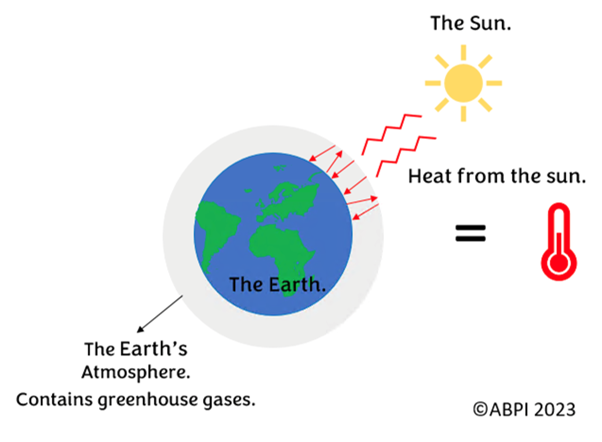This topic takes on average 45 minutes to read.
There are a number of interactive features in this resource:
 Biology
Biology
 Chemistry
Chemistry
 Physics
Physics
 Science
Science
 History
History
The climate is the temperature in one place over a long period of time. Every part of the Earth has a different climate.
However, climates around the world are changing.
This is called climate change.
The Earth’s average surface temperature is getting hotter too, and this is known as global warming.
Although climate change is linked to global warming, they are not the same.
This is because climates are not always getting hotter because of global warming. Some climates may experience colder temperatures, may experience more extreme weather conditions, or may experience natural disasters such as flooding.
Rather than these terms meaning the same thing, climate change is a result of global warming.
The Earth is surrounded by a layer known as the atmosphere, and gases are getting trapped in it. This stops the heat from the Sun from going back to space. These gases are called greenhouse gases.
The main greenhouse gas is carbon dioxide, and this is made both naturally and by humans.
However, it is mostly human activity both in the past and the present which has caused the release of greenhouse gases, such as through using electricity or through destruction of rubbish. This is why people who are tackling global warming want all humans to consider their actions carefully and whether those actions might have a negative impact on our planet.
For example, when we use electricity, we burn fossil fuels. Coal, oil and gas are fossil fuels, and these release greenhouse gases into the atmosphere.
Humans also cut down trees and this is called deforestation. Trees take in carbon dioxide so that they can generate energy, and so cutting down trees means that carbon dioxide cannot be removed from the air by trees, which means that it builds up more.

Also, trees are often burned when they are cut down. This releases all the carbon dioxide that the tree has stored back into the atmosphere.
It is normal for the weather to change, such as through the seasons or even just in one day! It is also natural for climates to change through natural climate cycles. Thousands of years ago the climate was going through an ice age, where the Earth was covered in snow and ice. This naturally changed.
However, the changes that are happening now are happening much more quickly and are more harmful.
The industrial revolution started in the 18th century (around 1760) and continued up until the 19th century. During this time there was a big change in industry, science and technology, and humans were starting to release more greenhouse gases due to their activities.
During this time, people started using fossil fuels (including coal, oil and gas) for energy. When these are burned, they release greenhouse gases which trap heat from the Sun and contribute to the greenhouse effect. Before fossil fuels were used, natural resources such as wood were used instead, and this method is known as the agrarian lifestyle. However, people during the industrial revolution found that fossil fuels were more efficient, so switched to this method instead. The industrial lifestyle, compared to the agrarian lifestyle, releases much more greenhouse gases and is much more harmful to the planet.
Also, as factories were developing and starting to make more products, they needed more raw materials to keep up with demand. This meant that better transport was needed. Horse drawn transportation was used prior to this, but the industrial revolution saw the introduction of man made canals, steam trains and roads. However, these vehicles used to transport the goods also contributed to global warming through fossil fuel use.